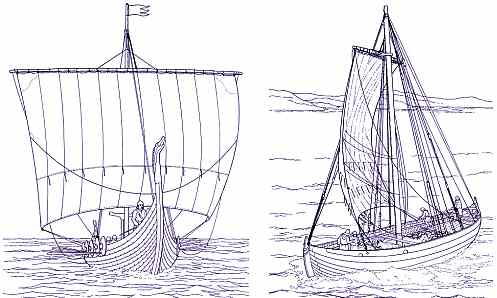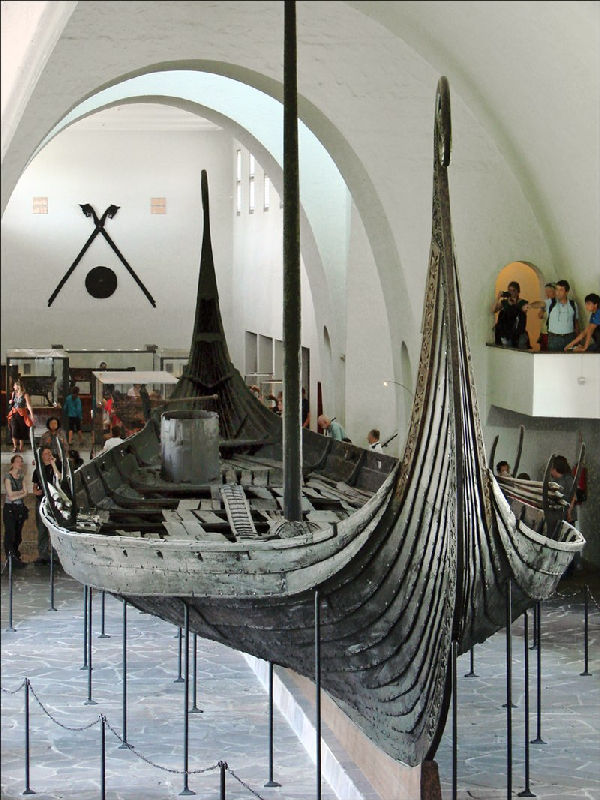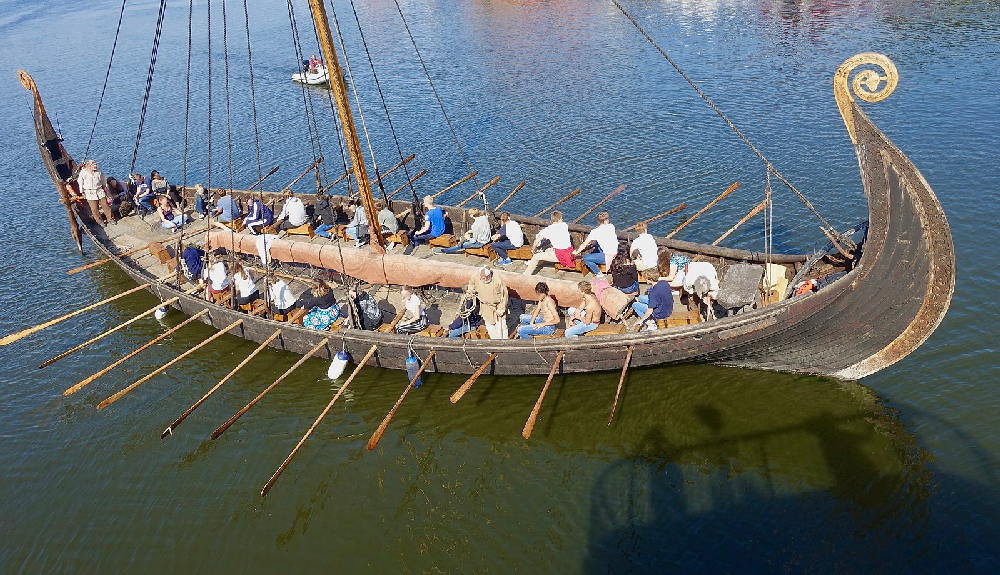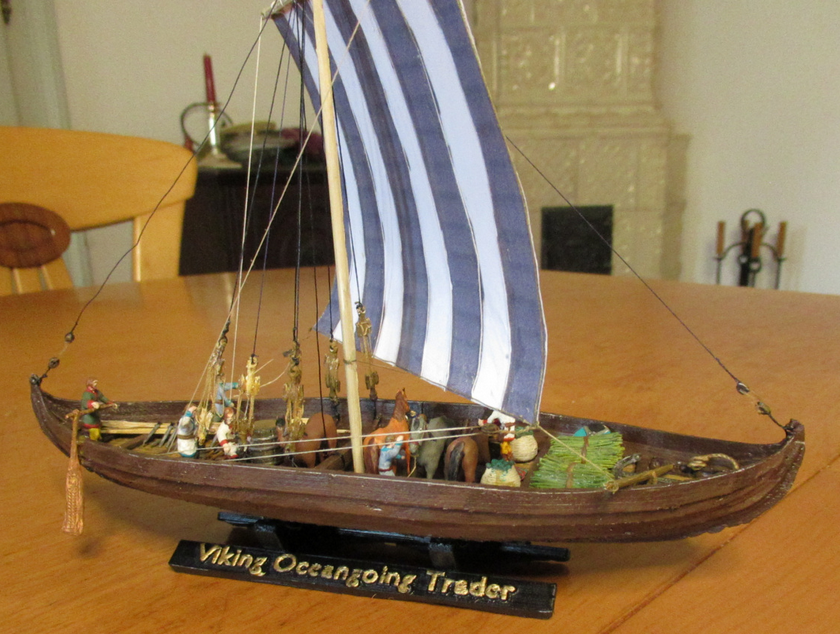|
 | Anglo Saxon History |  | |
| | Ship types available to William the Conqueror |
|---|
| |
|---|
Contents
|
|---|
| | |
|---|
The main Viking ship types - the Langskip and the Knörr ▲
|
|---|
 These images are of a langskip and a Knörr which are from Hurstwic: Viking Ships
These images are of a langskip and a Knörr which are from Hurstwic: Viking Ships
The main types of ships available to the Normans were Langskips(longships/longboats) the Viking main raiding vessels
that used both sails and oars to propel the ship, and the Knörr(pronounced Knarr) which were transport vessels normally
propelled by the wind but which had a few oars for manouvering.
| | |
|---|
The Oseberg ship ▲
|
|---|
 From Wikipedia:
From Wikipedia:
The Oseberg ship (Norwegian: Osebergskipet) is a well-preserved Viking ship discovered in a large burial mound at the
Oseberg farm near Tønsberg in Vestfold county, Norway. This ship is commonly acknowledged to be among the finest
artifacts to have survived from the Viking Age. The ship and some of its contents are displayed at the Viking Ship
Museum at Bygdøy on the western side of Oslo, Norway.
The ship is a Karve, clinker built, almost entirely of oak. It is 21.58 metres (70.8 ft) in length and 5.10
metres (16.7 ft) broad, with a mast of approximately 9–10 metres (30–33 ft) in height. With a likely sail area of 90
square metres (970 sq ft), the ship could have achieved a speed up of up to 10 knots (19 km/h; 12 mph). The ship has 15
pairs of openings for oars, enabling up to 30 people to row it.
Dendrochronological analysis of timbers in the grave chamber dates the burial to the autumn of 834.
| | |
|---|
Viking Langskip(Longship/Longboat) ▲
|
|---|
 This image of a Viking longboat is from https://www.thildekoldholdt.com/post/viking-age-ships,
and shows that they were able to carry large numbers of people possibly 50 or 60 if just used for transport.
This image of a Viking longboat is from https://www.thildekoldholdt.com/post/viking-age-ships,
and shows that they were able to carry large numbers of people possibly 50 or 60 if just used for transport.
It is recorded that King Harald Hardrada at the Battle of Fulford had over two hundred ships, apart from supply ships
and smaller craft". Combined with reinforcements picked up in Orkney, the Norwegian army most likely numbered between
6,000 and 9,000 men.
This would mean that each longship carried about 30 oarsmen(see The Oseberg ship above), which on a short journey across
the channel could possibly reach 50 per ship.
| | |
|---|
Ocean going Knörr scale model ▲
|
|---|
 This scale replica of an oceangoing Viking Knörr carrying goods is from an
oceangoing Knörr 3D print model by Alf Scherer, as you can see on this model 4 horses on one of these vessels is
less than half a full load.
This scale replica of an oceangoing Viking Knörr carrying goods is from an
oceangoing Knörr 3D print model by Alf Scherer, as you can see on this model 4 horses on one of these vessels is
less than half a full load.
|
|
|
|
|
| |
|
|
Local Interest
Just click an image |
|
|
|
|
|
|
|
|
|
|
|
|
| |
|
|